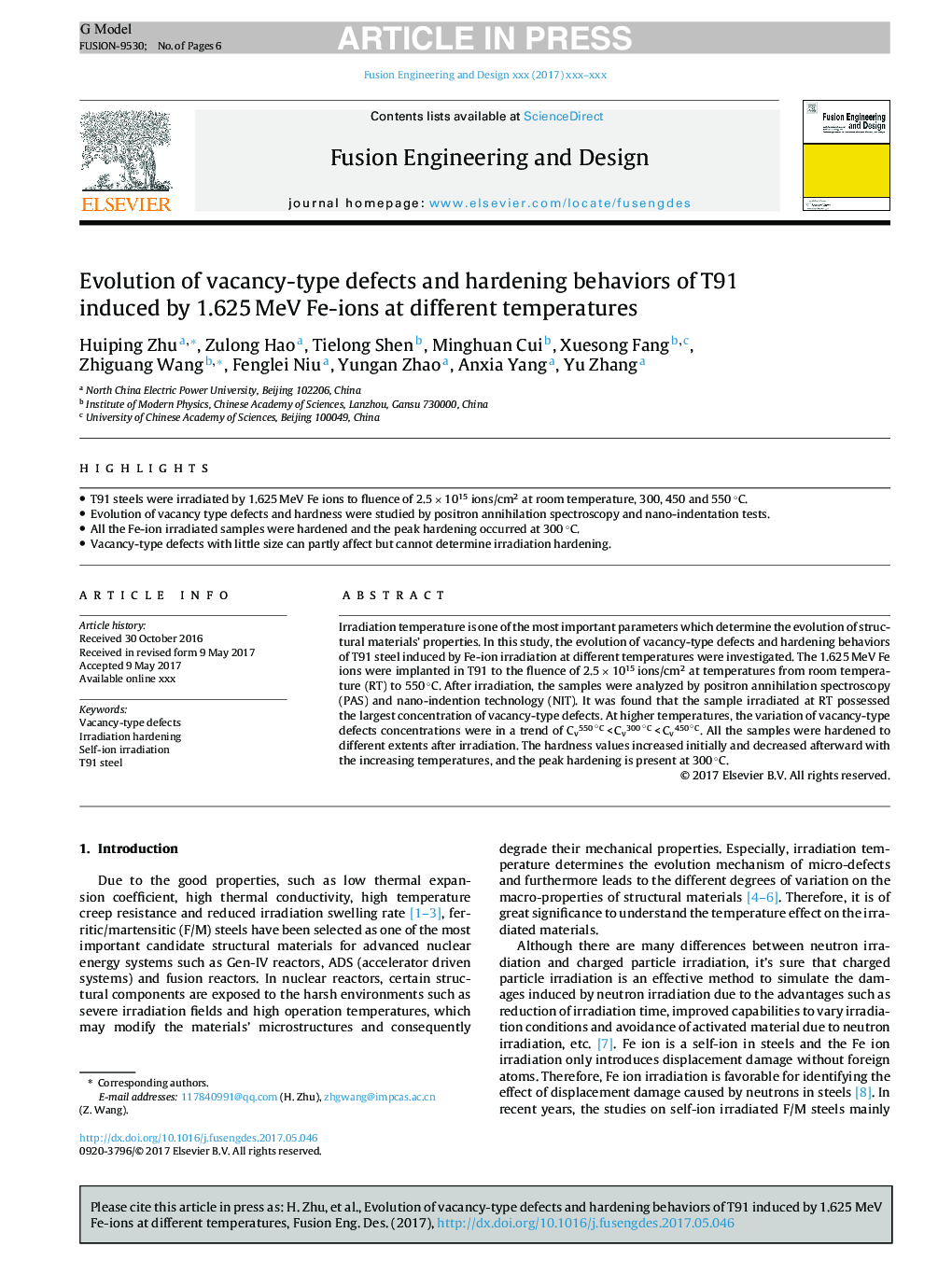| Article ID | Journal | Published Year | Pages | File Type |
|---|---|---|---|---|
| 6744131 | Fusion Engineering and Design | 2017 | 6 Pages |
Abstract
Irradiation temperature is one of the most important parameters which determine the evolution of structural materials' properties. In this study, the evolution of vacancy-type defects and hardening behaviors of T91 steel induced by Fe-ion irradiation at different temperatures were investigated. The 1.625 MeV Fe ions were implanted in T91 to the fluence of 2.5 Ã 1015 ions/cm2 at temperatures from room temperature (RT) to 550 °C. After irradiation, the samples were analyzed by positron annihilation spectroscopy (PAS) and nano-indention technology (NIT). It was found that the sample irradiated at RT possessed the largest concentration of vacancy-type defects. At higher temperatures, the variation of vacancy-type defects concentrations were in a trend of Cv550 °C < Cv300 °C < Cv450 °C. All the samples were hardened to different extents after irradiation. The hardness values increased initially and decreased afterward with the increasing temperatures, and the peak hardening is present at 300 °C.
Related Topics
Physical Sciences and Engineering
Energy
Energy Engineering and Power Technology
Authors
Huiping Zhu, Zulong Hao, Tielong Shen, Minghuan Cui, Xuesong Fang, Zhiguang Wang, Fenglei Niu, Yungan Zhao, Anxia Yang, Yu Zhang,
